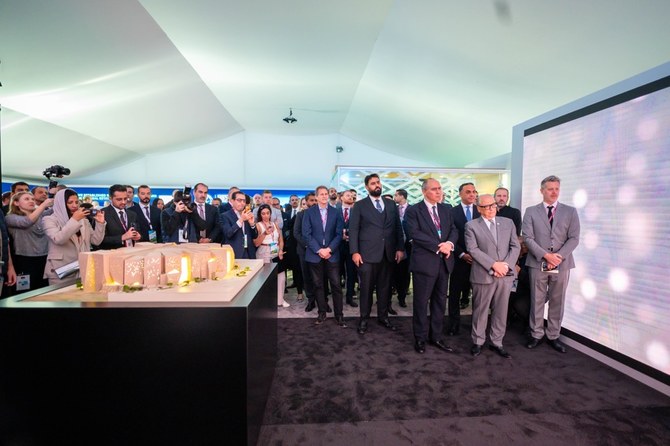RIYADH: Diriyah Co., a Public Investment Fund entity transforming Diriyah into a global cultural, historical, and lifestyle hub, on Wednesday unveiled an innovative concept design for The Arena in Diriyah at the global real estate exhibition MIPIM in Cannes.
Design of multipurpose sports, entertainment, and cultural arena, located on the outskirts of Riyadh, has been overseen by London-based HKS Architects, which said the result will be a technologically advanced, globally significant venue that embodies the essence of its surroundings, local geological formations, and culture.
The 20,000-seat arena marks a crucial milestone in Diriyah’s transformation as a key driver in Saudi Arabia’s vision for cultural and economic growth. This announcement is part of a SR236 billion ($63.2 billion) masterplan that underpins Diriyah’s development, redefining cultural and lifestyle offerings within the capital.
The 76,000-square-meter arena aims to establish itself as the premier venue in the Middle East, serving as a tourism hallmark, drawing visitors from across the globe and transforming the region’s events landscape.
Group CEO of Diriyah Co. Jerry Inzerillo said: “The Arena in Diriyah exemplifies Diriyah’s unique lifestyle offering that harmonizes community, culture, and natural connection, setting a new standard for world-class destinations rooted in Saudi heritage.”
The venue will incorporate the traditional Najdi architecture motif, reflecting centuries of heritage. It will feature a “versatile design that allows for easy configuration changes, enabling the hosting of multiple events in rapid succession,” while its “state-of-the-art design will prioritize excellent acoustics and optimal viewing angles from every seat.”
Beyond the arena, a shopping district and an outdoor plaza for performances and recreation expand the entertainment experience, according to the press release.
The Arena in Diriyah will be “one of Diriyah’s iconic assets, and integral to the unprecedented Diriyah masterplan,” aiming to enhance Saudi Arabia’s entertainment scene, in line with Saudi Vision 2030.
The venue champions a lifestyle that is “authentically Saudi,” offering a “harmonious blend of heritage and innovation, and fostering community engagement through world-class events that stimulate tourism and economic growth.”
HKS Architects lead architect Alex Thomas described the venue’s architecture as rising from the landscape like monoliths, inspired by local geological formations, and reminiscent of ancient Najdi forts and palaces.
“Captivating digital waterfalls” visually draw guests toward the vibrant and dynamic experience within, he said.
The announcement was made in the presence of UK Minister of State for Business and Trade, Lord Dominic Johnson of Lainston.



























